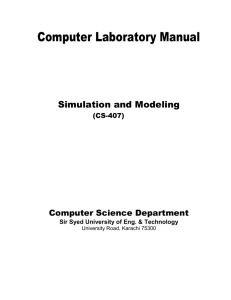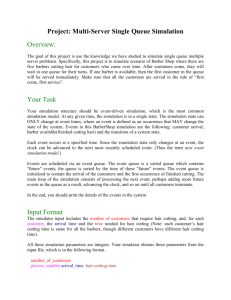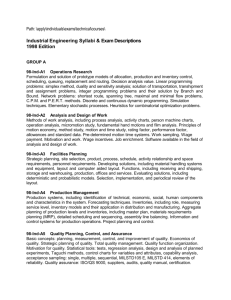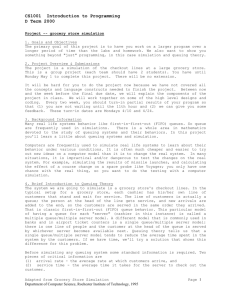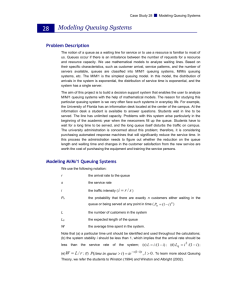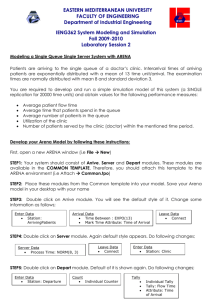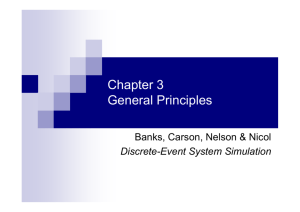Introduction to WINDOWS XP Interface and DESKTOP items
advertisement
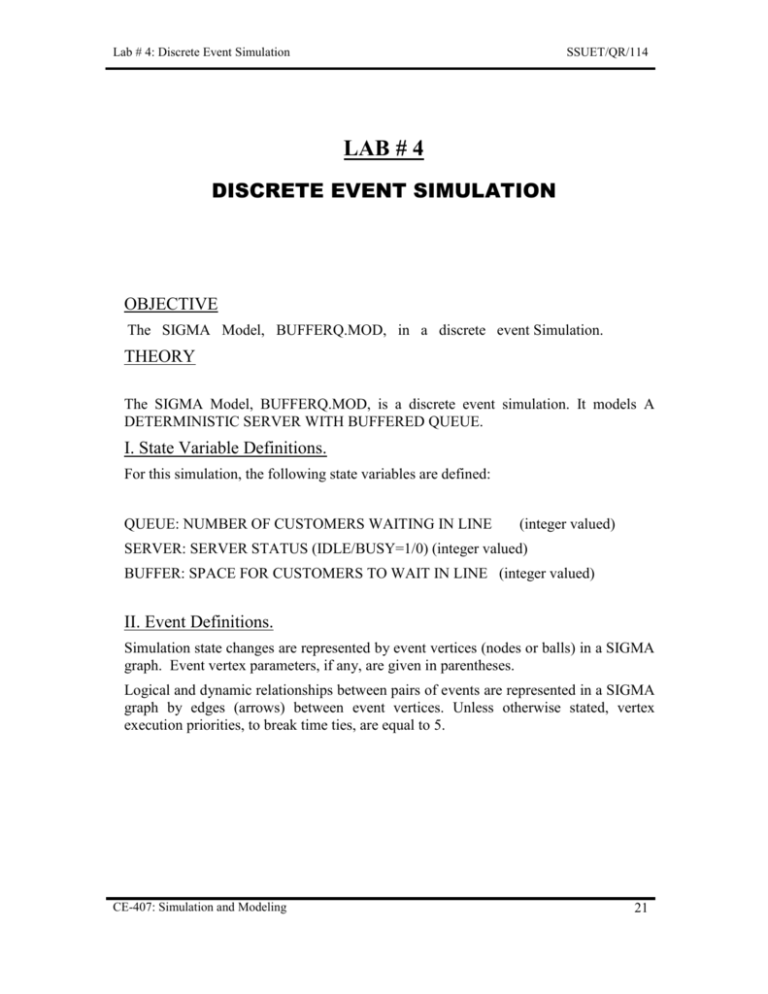
Lab # 4: Discrete Event Simulation SSUET/QR/114 LAB # 4 DISCRETE EVENT SIMULATION OBJECTIVE The SIGMA Model, BUFFERQ.MOD, in a discrete event Simulation. THEORY The SIGMA Model, BUFFERQ.MOD, is a discrete event simulation. It models A DETERMINISTIC SERVER WITH BUFFERED QUEUE. I. State Variable Definitions. For this simulation, the following state variables are defined: QUEUE: NUMBER OF CUSTOMERS WAITING IN LINE (integer valued) SERVER: SERVER STATUS (IDLE/BUSY=1/0) (integer valued) BUFFER: SPACE FOR CUSTOMERS TO WAIT IN LINE (integer valued) II. Event Definitions. Simulation state changes are represented by event vertices (nodes or balls) in a SIGMA graph. Event vertex parameters, if any, are given in parentheses. Logical and dynamic relationships between pairs of events are represented in a SIGMA graph by edges (arrows) between event vertices. Unless otherwise stated, vertex execution priorities, to break time ties, are equal to 5. CE-407: Simulation and Modeling 21 Lab # 4: Discrete Event Simulation SSUET/QR/114 Fig. No 1 1. The RUN(QUEUE,BUFFER) event occurs when INITIALIZATION OF THE RUN. Initial values for, QUEUE,BUFFER, are needed for each run. This event causes the following state change(s): SERVER=1 After every occurrence of the RUN event: Unconditionally, INITIATE THE FIRST CUSTOMER ARRIVAL; that is, schedule the ARRIV() event to occur without delay. 2. The ARRIV() event occurs when ARRIVAL OF A CUSTOMER. After every occurrence of the ARRIV event: Unconditionally, SCHEDULE THE NEXT ARRIVAL; that is, schedule the ARRIV() event to occur in 3+5*RND time units. (Time ties are broken by an execution priority of 6.) If QUEUE<BUFFER, then THERE IS SPACE, SO THE CUSTOMER CAN ENTER; that is, schedule the ENTER() event to occur without delay. CE-407: Simulation and Modeling 22 Lab # 4: Discrete Event Simulation SSUET/QR/114 3. The ENTER() event occurs when CUSTOMER FINDING SPACE AND ENTERING. This event causes the following state change(s): QUEUE=QUEUE+1 After every occurrence of the ENTER event: If SERVER>0, then THE SERVER IS FREE, SO START SERVICE; that is, schedule the START() event to occur without delay. 4. The START() event occurs when START OF SERVICE. This event causes the following state change(s): SERVER=0 QUEUE=QUEUE-1 After every occurrence of the START event: Unconditionally, SERVICE TAKES 5 MINUTES; that is, schedule the LEAVE() event to occur in 5 time units. (Time ties are broken by an execution priority of 6.) 5. The LEAVE() event occurs when CUSTOMER FINISHING SERVICE AND LEAVING. This event causes the following state change(s): SERVER=1 After every occurrence of the LEAVE event: If QUEUE>0, then CUSTOMERS ARE STILL WAITING, SO START SERVICE; that is, schedule the START() event to occur without delay. CE-407: Simulation and Modeling 23 Lab # 4: Discrete Event Simulation SSUET/QR/114 ASSINGMENT •Design of a server/single queue model with random arrival rate and random service rate and limited no. of customers in queue. Use a variable buffer for max. queue length figure No.1 CE-407: Simulation and Modeling 24

